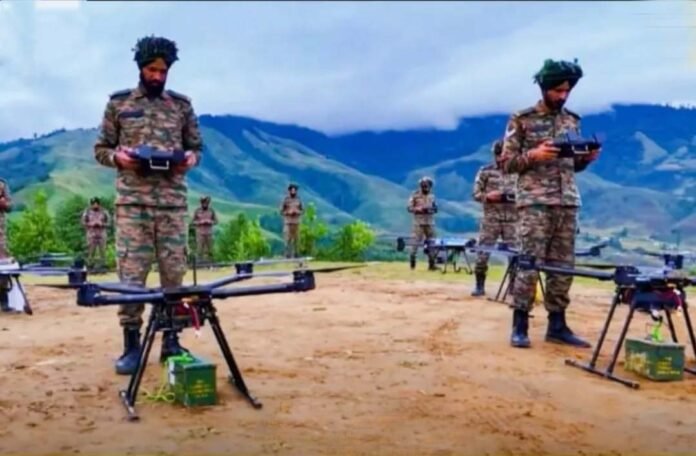New Delhi: All three Indian defence forces—Army, Navy, and Air Force participated for the first time post-Operation Sindoor in Exercise Cold Start, focused on drone and counter-drone warfare. The exercise which started on September 8 at Babina and Mhow military locations in Central India, emphasised inter-service integration of unmanned aerial systems and their countermeasures.
Organised by the Integrated Defence Staff, the exercise aimed to harmonise operational capacity across the three forces in detecting, neutralising, and deploying drones in complex combat scenarios. Chief of Defence Staff Gen Anil Chauhan observed the exercise, underscoring the drill’s strategic importance.
Operation Sindoor marked a significant escalation in drone warfare, with Indian forces conducting precise strikes against terrorist bases inside Pakistan using a mix of indigenous and imported drones. Pakistani responses involved Turkish and Chinese drones targeting Indian military and civilian sites, but these attacks were successfully repelled by Indian counter-drone measures. The drone engagements in Operation Sindoor exposed both strengths and gaps in drone tactics and technologies, motivating the Indian defence establishment to adapt and enhance integrated counter-drone capabilities. Exercise Cold Start is a direct outcome of these lessons, aiming to prepare forces for multifaceted aerial threats in future conflicts.
The drill tested real-time coordination among the Army, Navy, and Air Force in managing drone surveillance, strikes, electronic warfare, and kinetic countermeasures. It also focused on rapid threat identification and neutralisation to ensure territorial security. India’s expanding drone inventory and indigenous developments have made unmanned systems critical to modern battlefield dominance. Exercise Cold Start symbolically integrates these capabilities into a unified defence posture, ensuring responsiveness against asymmetric threats.
The exercise reflected India’s commitment to strengthening multi-domain warfare readiness, leveraging lessons from recent operations to maintain strategic and tactical superiority in emerging drone conflict environments.



